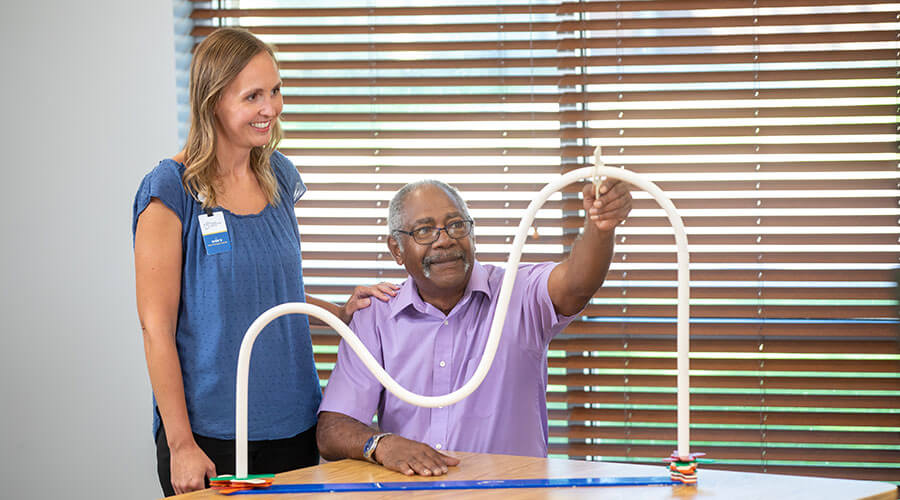When you or a loved one finds it more challenging to complete daily tasks or you’re struggling to find the strength or motivation to do them, it may be a good time to look at rehabilitation therapy.
Maybe you’re not walking as well as you used to, or you feel unsafe as you go about your day. If so, it’s important to be proactive.
“It’s so much more beneficial before there is a real problem,” says Kelcey Smith, therapy supervisor for the Good Samaritan Society in southwest Minnesota. “It’s a prevention strategy versus a fix-it strategy. If you start to notice any little gap in abilities or have a small ache or pain, it may be a good time to seek those therapy services.”
Setting goals and getting stronger
If it’s time for therapy, your next step is to contact your doctor about a referral. From there, the Good Samaritan Society’s rehab therapy teams provide an initial evaluation to help you set goals.
Whether you’re experiencing weakness, pain or balance and endurance issues, the interventions will be based on your needs with the goal of helping you improve as much as possible.
“A person might want to go to their grandkid’s events, but they don’t feel safe walking on the grassy field. We look at all the little steps that need to happen for them to safely do that,” Kelcey states. “Then we break down those tasks and provide different treatments to get them there.”
“There is no black-and-white plan of care. It’s whatever the person needs it to be,” says Kelcey.
Society rehab locations use technology to help patients. Electrical stimulation and ultrasound therapy can help increase strength or decrease pain.
Rehab therapy sessions often include NuStep machines, core stick strengthening systems and sit-to-stand trainers. Rehab therapists also utilize weights, resistance bands and balance pads.
“It’s best to reach out to the location and find out what technologies and equipment they have,” Kelcey recommends.
Serving rural patients
The Society’s rehab therapy teams strive to help patients wherever they live, whether it’s in their own homes or one of our locations.
People living in rural locations can get the outpatient rehab services they need with visits from the rehab therapy team.
“I love how the Society is creating new programs like the outpatient at home program to help people be in their homes longer, especially in the rural setting,” says Kelcey.
Supporting surgery
The Society’s rehab therapy teams can work with patients before a doctor refers them for orthopedic surgery.
“It’s never a bad thing to do therapy before you have surgery. You’re more likely to have better outcomes than if you go into that surgery weak,” Kelcey states.
Doing rehab therapy before surgery can strengthen your muscles, which helps with a faster recovery after the surgery.
Because pain is common after surgery, a rehab therapist can also provide positioning advice, exercise moves and stretching tips to help with pain management.
Staying positive
A key to success with rehab therapy is having a positive attitude and a willingness to listen to the therapy team. Read one woman’s success story.
Your goals may change, but improvement is still possible.
“Anyone willing to give a lot of effort toward their therapy will not fail to reach their goals,” Kelcey states. “We’ll work with a person and help them realize what a reasonable goal might be.”
The Society’s rehab therapy teams put patients first and strive to meet you where you are.
“Being able to help people experience life again after an injury or illness – I don’t think I could find anything more meaningful than that,” says Kelcey.




